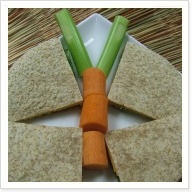
Many parents struggle with deciding how much Halloween candy is too much for their little trick-or-treaters.
Here are some tips that are posted on York Region Community and Health Services:
1. After trick or treating, let your children empty their candy bag, sort it and eat as much of it as they want. Let them do the same the next day.
2. On the third day, have them put the candy away and only allow it to be eaten during meals and snacks: a couple of small pieces for dessert and as much as they want for snack time.
3. If children can follow these rules, they get to keep control of the candy. Otherwise parents take control.
4. Offer milk, fruit or vegetables with the candy to offer some nutrition.
5. Schedule meals and snacks at regular times and keep the routine of letting your child have Halloween candy only at these times. This way candy will not spoil a child’s diet.
6. Remind children to brush their teeth after eating the candy and if this isn’t possible, at least rinse their mouth.
These tips were adapted from: Your Child’s Weight: Helping Without Harming Birth Through Adolescence, 2005 by Ellyn Satter.
You'll notice that these tips follow Ellyn Satter's Division of Responsibility of Feeding, where parents decide WHAT, WHEN and WHERE, while children decide IF and HOW MUCH. In order for this theory to be successful, a parent must trust that their child is capable of eating the amount they need. Ellyn believes, "if parents do their jobs with feeding, their children will do their jobs with eating".
What do you think about this idea? What are the "rules" in your home when it comes to Halloween treats?






